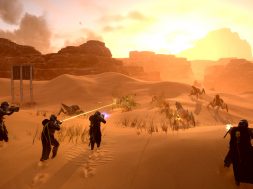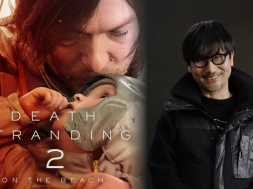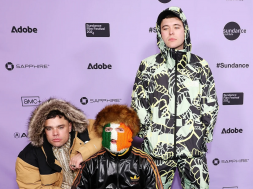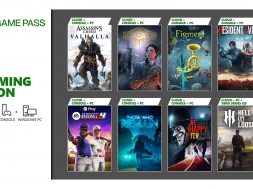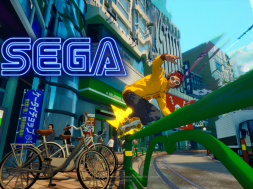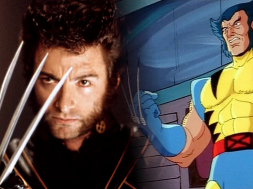Initial Release (1993)
Based upon the novel of the same by Michael Crichton, Jurassic Park was already a sought after commodity before the book even hit shelves. Three different claims were staked for the dinosaur park property on the back of the impending release, with Universal and Steven Spielbarg securing them once and for all for a 1.5 million dollar bid. Once the dust had settled on the deal, Crichton was paid an initial 500,000 dollars to pen the screenplay. A screenplay that was then doctored by one David Koepp, whose responsible for some great and some not so great feature-length slabs of fiction. While it would be easy to berate Koepp for the bastradization of the original author’s work, it’s also important to bear in mind he’s what made the film family-friendly. Crichton’s novel is much darker and more violent than the film, a commonality found in many adaptations to screen, and its safe to assume his screenplay draft would cling to these grittier scenes with much affection, so while Koepp made a change we’d usually guffaw at, he made a change that made sure us growing up with the film was a reality.
Its no wonder, then that Jurassic Park cleaned up at the box office upon release. A staggering 900 million dollars was made upon initial theatrical run. Considering the budget was 63 million, that’s a lot of profit. The dinosaur effects were outstanding, with the Tyrannosaurus Rex chase-sequence being the most obviously spectacular. Considering the re-release last year was just as well-received, its fair to say Spielberg and co. did something very right with this one.
My Experience (1993 – 2014)
As a product of the nineties, my childhood was littered with standard-setting films that very much sculpted my love of all things weird and wonderful today. Jurassic Park was absolutely one of those films. Though I was a little young for the initial cinematic release, despite it landing right on my fourth birthday, I do remember having a Jurassic Park pencil case, and as such, I can’t remember when I first seen but I know it made an impact. My actual memory of watching the film isn’t enveloped with some momentous event in my life or some moment when I fell in love with cinema, as would be a normal reaction to seeing this at a young age, instead its actual sewn directly into the fiber of my day-to-day life as a youngster in primary school. Every day, at 3 o’clock, the bars would open and I would once again become a free man, free from the shackles of formal education and straight into the warmth of my dad’s car to be whizzed home on the same road I would stare at longingly each break. Upon arrival, I would pop in my favorite tape and watch it while my dad made me my first meal in the outside world (tea and toast (sometimes cheese, sometimes jam)) and I would once again, as I did every day, visit Jurassic Park. And it never lost its magic.
 Watching it now, the first thing that comes to mind, as with most Spielberg pictures is the absolute timelessness in the production. With his reliance on animatronic effects and actual sets, the sense of tangibility hasn’t faltered in the two decades since creation. The other aspect of the opening sequence, with its trade mark absence of the dinosaur except for quick flickers and the synonymous ‘SHOOT HER!’, is the very real horror very firmly at play. At no point during the opening couple of scenes is it demonstrated that the island is a good idea, or that this will necessarily end well. Of course, it doesn’t, there’s no film to be made from a fully functioning roller-coaster, but a little older and a little wiser, the earnest overtones are a nice touch that help move away from the cartoony concept that occasionally leaks into cartoony execution.
Watching it now, the first thing that comes to mind, as with most Spielberg pictures is the absolute timelessness in the production. With his reliance on animatronic effects and actual sets, the sense of tangibility hasn’t faltered in the two decades since creation. The other aspect of the opening sequence, with its trade mark absence of the dinosaur except for quick flickers and the synonymous ‘SHOOT HER!’, is the very real horror very firmly at play. At no point during the opening couple of scenes is it demonstrated that the island is a good idea, or that this will necessarily end well. Of course, it doesn’t, there’s no film to be made from a fully functioning roller-coaster, but a little older and a little wiser, the earnest overtones are a nice touch that help move away from the cartoony concept that occasionally leaks into cartoony execution.
Through meeting the dinosaur-loving duo Dr. Alan Grant (Sam Neill) and Dr. Ellie Sattler (Laura Dern), we’re introduced to the man behind the whole operation John Hammond (Richard Attenborough) who swiftly whisks them away to the island for their dreams to come true. While its cliché, its also endearing that the characters are as excited about the concept as we, the viewers are. A good script and tight performances maintain that excitement, and helps it feel less contrived upon re-watches now, when we’re more spoiled for choice in big productions. However, once we see the brachiosaurus for the first time and John Williams’ epic score finds its feet, then we see the true magic unfold.
First it’s the ever-loveable brachiosaurus, then its the always-real-in-our-hearts triceratops with the wonderful scene where Grant and Sattler attempt to treat the animal, while Jeff Goldblum’s Ian Malcolm demonstrates his eccentric delivery we have all grown to love. Even now its hard to find a foot wrong in the rhythm. Suspense and delivery come in equal measure, and as the suspense grows to newer heights, so does the delivery. From the park ride itself trucking along nicely, with that poor goat, to the park ride going inevitably haywire, the narrative is always transitioning smoothly, with nothing feeling out of place or out-staying its welcome. Even the greater ensemble, completed with Lex and Tim Murphy, Hammond’s grandchildren, played by Ariana Richards and Joseph Mazzello, respectively, Ray Arnold, the chief engineer, whose played by none other than Samuel L. Jackson, Robert Muldoon, the park’s hunter, played by Bob Peck and Dennis Nedry, the attempted saboteur of the park, played by Wayne Knight, all feel distinctive and each have at least one scene that’s entirely memorable. I mean, how many times have you heard ‘Clever girl?’ referenced, or ‘Aw aw aw, you didn’t say the magic word!’? More than you’d care to admit, probably. Hell, if you’re in my vicinity, most of my conversation is nineties pop culture references strung together with a loose semblance of cohesive language. But I digress.
 I mentioned earlier how the film doesn’t shy away from how bad an idea a theme park filled with dinosaurs from the off is, and in the second half, when everything has gone just a bit wrong and people are dying, sometimes even on the toiled and the T-Rex is stomping about the place, there’s a real sense of regret. Hammond voices how he’ll do things better next time, maintain greater control, but Sattler convinces him that there is no control to be had – re-creating nature in this fashion is indomitable and destined to fail, despite the magic that flows from managed the creation in the first place. Its a simple, but poignant way of showing how this is a film, and its a film made with a self-awareness of how tantalizing the idea is, but how it will never be tameable, similar in effect to 1973’s Westworld, though replacing robots with dinosaurs
I mentioned earlier how the film doesn’t shy away from how bad an idea a theme park filled with dinosaurs from the off is, and in the second half, when everything has gone just a bit wrong and people are dying, sometimes even on the toiled and the T-Rex is stomping about the place, there’s a real sense of regret. Hammond voices how he’ll do things better next time, maintain greater control, but Sattler convinces him that there is no control to be had – re-creating nature in this fashion is indomitable and destined to fail, despite the magic that flows from managed the creation in the first place. Its a simple, but poignant way of showing how this is a film, and its a film made with a self-awareness of how tantalizing the idea is, but how it will never be tameable, similar in effect to 1973’s Westworld, though replacing robots with dinosaurs
My two favorite set-pieces, however, are in the last act. The most obvious one is the kitchen raptor scene, which if you haven’t watched the film in a while, you should check out that one sequence again. Not only is it a masterful injecting of true suspense and terror into a family film, but its very real horror, similar to what is showcased in the opening scene. It’s long, it’s quiet and it is spine-chillingly effective. The other one is actually the last scene in the park, where the dinosaurs come stomping in as the humans make their escape. When the banner drops ‘Welcome to Jurassic Park’ on the tyrannosaur rex, the realization of what is on-screen is incredible, and an absolute reward to the viewer. A masterclass then, and a masterclass now.
R.I.P Richard Attenborough (1923 – 2014)
